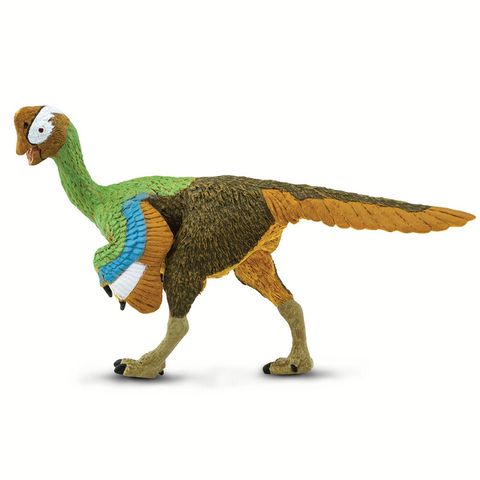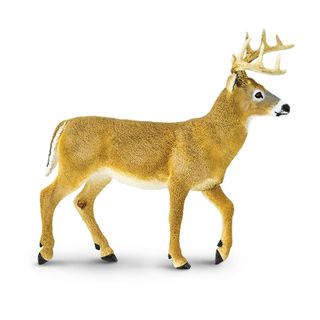
Description
While not as popular as its relative Oviraptor, Citipati is much more well understood by paleontologists. In fact, most artistic depictions of Oviraptor are actually based on Citipati. This ten foot long theropod dinosaur lived during the Late Cretaceous and was very likely covered in feathers.
- Scientific Name: Citipati
- Characteristics: This Citipati figure is posed in a walking stance with its head turned to the left, possibly alerted to the presence of a predator. With feathers over nearly its entire body, this figure is meticulously sculpted and hand-painted, showing off its striking bold plumage.
- Size and Color: Citipati measures 7 inches long and just over 4 ¼ inches tall. Its feathers are green, blue, dark brown and light brown, with a mask of white over the eyes and on its arms. Its underside is an orange-brown and its featherless lower legs are gray with black claws.
History:
Citipati is a member of the Oviraptoridae family. “Oviraptor” means “Egg Thief”, and it was originally believed that these dinosaurs preyed upon the eggs of other animals due to their remains being discovered near nests of eggs presumed to be from other dinosaurs. The discovery of several Citipati skeletons sitting on top of nests full of eggs, however, flipped that entire notion on its head and showed that the animals were not stealing other dino eggs, but raising their own.
Citipati was named after a spiritual figure in Tibetan Buddhist legend. The Buddhist Citipati are often shown as dancing skeletons, and so the discovery of many well-preserved dinosaur skeletons were named Citipati as a reference to them.
Citipati helped convince scientists of the strong link between dinosaurs and modern day birds, and the way it sat upon its nest, with its arms outstretched, seems to suggest the likelihood that feathers were present to help it better cover its eggs.
- Size in cm: 17.3 L x 5 W x 10.3 H
- Size in inches: 6.81 L x 1.97 W x 4.06 H
- UPC: 095866001520









